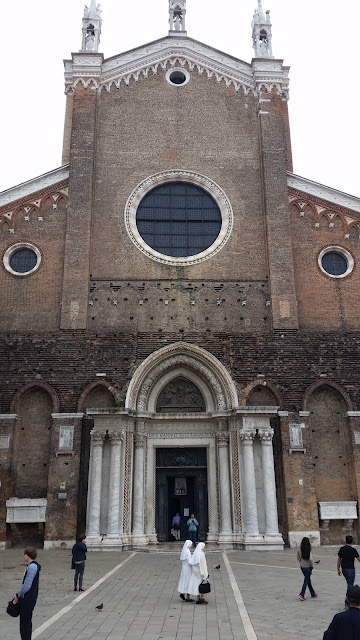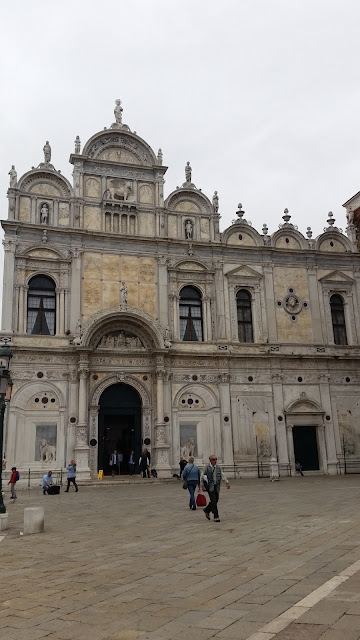Buongiorno, tutti!
For the last four months, my Wednesday routine includes trotting off to Cannaregio for a 6pm English lesson. My student, Francesco, is a lovely Venetian man who is fairly competent with the English language, however doesn't have much opportunity to keep up with speaking it. Thus, the weekly conversations. We talk for most of the time, spending the other portion reading an excerpt from a newspaper or magazine. Recently, upon suggesting he read a book, he jumped up and pulled a book from his book shelf. This book:
I love this book. In fact, I love all of Alberto Toso Fei's books. If you are a lover of Venice you probably have already discovered his many fascinating books with stories of unique spots and happenings in a Venice of an older time. At any rate, Francesco had never opened the book before. So together we cracked it open, I selected a short excerpt and he began to read.
The problem with this book for Francesco is that it is originally written in Italian which has been translated into English. It's a complicated read because the sentence structure is Italian. What he needs is a book written in English, not translated into it. But more on that a bit later.
The story we read describes something that happened in Campo San Giovanni e Paolo, on the northern end of the Castello district. Francesco, who has Venetian grandparents and has lived in the city as an adult for more than 20 years and also spent much of his childhood here visting his family, did not know this story. I had read the book years ago so was familiar with the story. I'm in Campo San Giovanni e Paolo often, but it's been ages since I went to actually look at the site of this particular episode Alberto Toso Fei describes. The other day as I walked through the campo, I took time to search more carefully.

 |
| Campo San Giovani e Paolo |
 |
| Church of San Giovanni e Paolo, built in the 1300s |
 |
| Statue of Bartolomeo Colleoni |
Alongside the church you will find the Scuola Grande di San Marco, with it's exquisite marble facade. And it's this building that figures into the subject of the story. But before I go on with that, look carefully at the following photos that show some of the detailed carvings decorating the front of the building.
 |
| Scuola Grande di San Marco, Castello |
 |
| lion on the front of Scuola Grande di San Marco |
Rumor has it you can still hear his desperate screams in the campo as he searches for his mothers heart.
Cespo Pizzigani,the stonecutter, who was sitting in the shadows by the Scuola doorway, made a sketch of the event he witnessed that night.
Look closely. You'll see a man in a turban, holding a heart shaped object in his hand. This etching is on the doorway as you enter the main door of the Scuola Grande di San Marco.
Over the years I've enjoyed tracking down many of these little obscure yet fascinating stories from Venice's past. They make this city come alive for me.
Now back to my student, Francesco. We read a few stories from Fei's book. Fun for me because in addition to helping him with his English, these stories were new to Francesco. Unfortunately, the language of the book in the English translation is difficult. So we put that book aside.
I've taken him a copy of a Donna Leon book! Written in English by a native American English speaker, Donna Leon writes mysteries set in Venice. I'll get Francesco learning about this city yet!
*Story of the man with the heart from Alberto Toso Fei's Venetian Legends and Ghost Stories, A guide to places of mystery in Venice.









